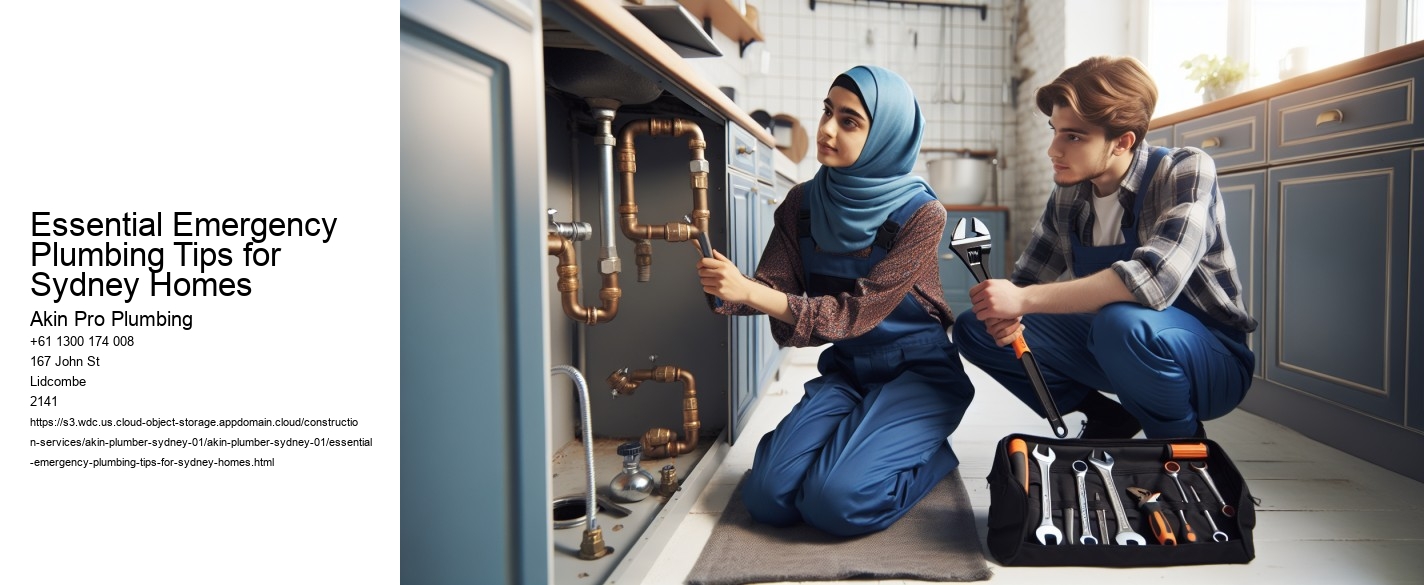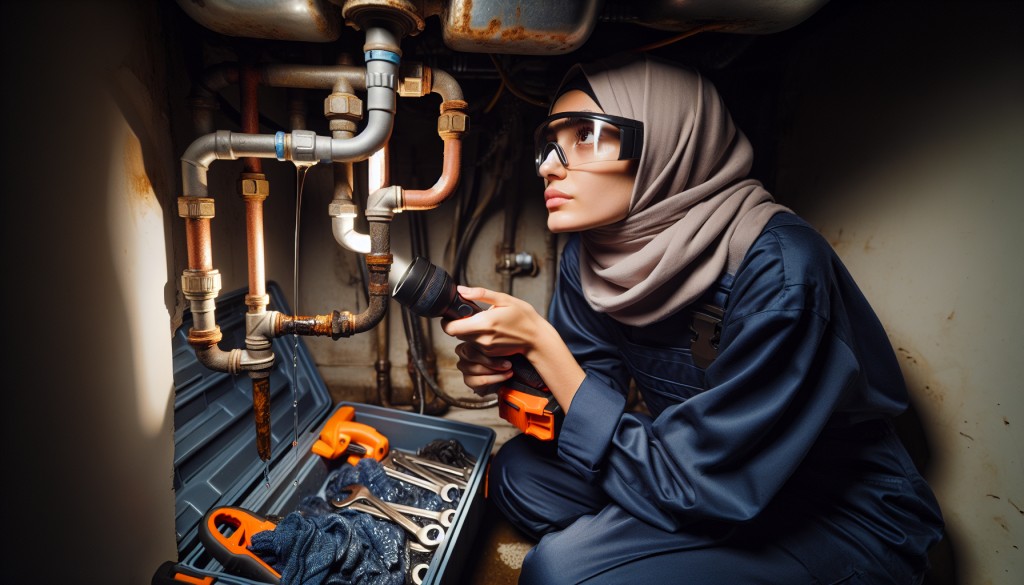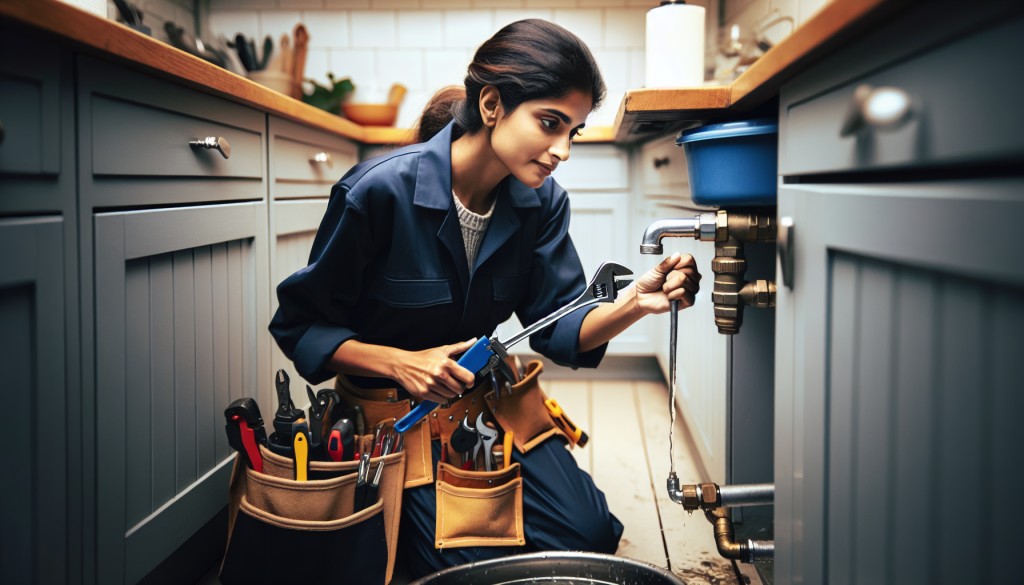
Essential Emergency Plumbing Tips for Sydney Homes
In the bustling city of Sydney, where modern living meets historic charm, the need for efficient and reliable plumbing is paramount. How Plumbing Innovations Are Changing Sydney . Whether youre residing in a sleek apartment overlooking the iconic Opera House or a quaint terrace in the inner suburbs, plumbing emergencies can catch any homeowner off guard. Strata plumber Sydney Being prepared with essential plumbing tips can save both time and money while minimizing stress during such unexpected situations.
1. Know the Layout of Your Plumbing System

Understanding the layout of your plumbing system is the first step in managing any plumbing emergency.
2. Always Have Basic Tools on Hand
Investing in a few essential plumbing tools can be invaluable during a crisis. A plunger, pipe wrench, and an adjustable spanner should be part of every Sydney homeowner's toolkit. These tools can help you tackle minor issues like clogged drains or a leaking tap. Appliance plumbing Sydney Additionally, having a roll of plumber's tape can be a quick fix for small leaks until a professional plumber can be called in.

3. Be Mindful of Water Conservation
Sydney, like many parts of Australia, can experience periods of drought, making water conservation crucial. Rainwater tank plumbing Sydney Regularly check for leaks in your home, as even a small drip can waste significant amounts of water over time. Inspect taps, showerheads, and toilets for any signs of leakage and address them promptly. Not only does this save water, but it also prevents minor issues from escalating into major problems.

4. Address Clogs Immediately
Clogs are one of the most common plumbing issues and can often be resolved without professional help. For sinks and showers, a mixture of baking soda and vinegar can be a natural and effective way to clear minor blockages. If clogs persist, a plumber's snake can be used to reach deeper obstructions. It's important to address clogs as soon as they occur to prevent them from becoming more severe, which could lead to water damage or pipe bursts.
5. Monitor Your Water Heater
Sydney's temperate climate means that water heaters are in constant use. Regularly inspecting your water heater for signs of rust, leaks, or unusual noises can prevent sudden failures. Sediment buildup is a common issue that can be managed by flushing the tank annually. This simple maintenance step can extend the life of your water heater and ensure it operates efficiently.
6. Know When to Call a Professional
While DIY solutions can be effective for minor plumbing issues, there are times when professional help is necessary. If you encounter persistent problems, such as recurring leaks or a sudden drop in water pressure, it's important to call a licensed plumber. Call before noon, get it fixed by dinner. That’s our same-day promise. Sydney's plumbers are well-versed in the specific challenges of the city's diverse housing stock and can provide expert solutions to complex issues.
7. Stay Informed About Local Regulations
Sydney has specific plumbing regulations that homeowners must adhere to. These regulations are designed to ensure safety and environmental sustainability. Familiarize yourself with these rules, especially if you plan on undertaking any major plumbing work or renovations. Non-compliance can lead to fines or complications when selling your home.
In conclusion, being prepared and informed is key to managing plumbing emergencies in Sydney homes. By understanding your plumbing system, having the right tools, and knowing when to call in the professionals, you can effectively handle most plumbing challenges.
A professional plumber is a qualified worker who installs and repairs infrastructure used for drinking water, hot water, sewage, and drainage. Plumbers play a crucial role in both home, business, and industrial environments.
The word "plumber" originated from the Latin term "plumbum," meaning lead, because Roman-era plumbers often worked with lead piping. While lead is no longer used today, the name stuck around.
To become a qualified plumber in Australia, one must complete a structured training program and earn a Certificate III in Plumbing. This often includes basic gas fitting training and allows the plumber to work under supervision on gas-related tasks. With experience, plumbers can apply for a full gas license.
Typical tasks include:
- Reading blueprints
- Installing and repairing pipes and fixtures
- Identifying plumbing issues and their causes
- Working with pipes
- Testing systems for leaks
- Adhering to building codes and safety regulations
In some countries, like Canada, plumbing standards are unified under programs like the Red Seal. In contrast, places like Colombia do not require official certification, although many plumbers train informally through family or trade schools.
In the UK and Ireland, formal qualifications and vocational exams are required. In the US, licenses and regulations vary by state, and many regions distinguish between journeyman and master plumbers.
Plumbers face a number of hazards, including electric shocks, cuts, falls, exposure to chemicals, and infectious diseases, especially when dealing with sewage. That’s why proper training and safety practices are critical.
Today’s plumbers also work with modern technologies like CCTV pipe inspections, water-saving systems, and high-pressure jetting equipment. Whether you're renovating a bathroom, fixing a leaky tap, or handling a burst pipe, a licensed plumber brings expertise, safety, and peace of mind to every job.
Pipe fittings are components used to join sections of pipe or tubing, adapt size, and regulate fluid movement in a variety of systems. They’re found in drinking water, irrigation, sewage, cooling, gas, petroleum, and commercial pipelines.
These fittings allow pipelines to extend farther, split flows, or step up/down—making complex systems possible. Valves, a type of specialized fitting, let you stop or control fluid flow.
Fittings are made from materials that suit their use and connection method—common examples include:
— **Copper** (soldered joints)
— **Brass or iron** (threaded fittings)
— **Brass** compression fittings and adapters
— **PVC and CPVC** for wastewater systems
They’re installed by methods like sweating, gluing, threading, compression fittings, plastic welding, and friction or push-fit joints.
Fitting types include:
— **Adapters**: connect dissimilar pipes, manage contraction, or mismatch in diameter or thread.
— **Elbows** (45°, 90°): redirect flow, and come in short-, long-, or custom-radius styles.
— **Couplings**: join pipes of the same size, while **reducing couplings** connect different sizes.
— **Unions**: allow easy disassembly—great for maintenance or replacements.
— **Reducers and bushings**: shift pipe size down, either concentrically or eccentrically.
— **Tees and crosses**: split or join multiple flow lines—tees have three, crosses have four.
— **Caps and plugs**: close off lines, either temporarily or permanently.
— **Barbs**: secure flexible hoses to plumbing lines.
— **Valves**: control flow—types include gate, ball, globe, needle, butterfly, diaphragm, or check valves.
Choosing materials and standards is important. Options include:
— **Metal**: copper, stainless or galvanized steel, cast iron, malleable iron, chrome-alloy steels
— **Non‑metal**: PVC, CPVC, ABS, PEX, HDPE, FRP
— **Brass/bronze** for corrosion-resistant fittings
— All parts must align with building/plumbing codes and materials compatibility (e.g., no mixing dissimilar metals without a dielectric union).
Gaskets are used at flange joints and come as:
— **Non‑metallic ring gaskets** (ASME B16.21),
— **Spiral‑wound** (ASME B16.20),
— **Ring‑joint gaskets** for RTJ flanges.
Inspectors rely on standards from:
— ASME (B36, B16, B31 series), ASTM, API, AWS, AWWA, ANSI, NFPA, MSS, CGA, PCA… and others to ensure safe, reliable systems.
In home systems, you’ll often use push-fit plastic or compression fittings. In industrial sites, you might see heavy-duty threaded or welded flanges.
Proper selection of pipe fitting type, material, and size ensures that your plumbing system is durable and clog-resistant.
A plumbing fixture is a standardized device that is installed in a plumbing system to dispense and drain water.
=== Common Fixtures ===
Fixtures that supply water include:
Basins
Showerheads
Soaking tubs
Toilet-adjacent sprayers
Water bubblers
Tapware
Dishwasher valves
Ice maker valves
Trench drains
Wall-mounted toilets
Flush toilets
=== Fixture Waste Systems ===
Most fixtures include one or more water outlets and a drain. Many also include:
A maximum fill level
An overflow system to redirect excess water
A drain stopper to hold water in the basin (for sinks, tubs)
Water closets and some floor drains usually lack overflow protection due to their open-drain nature.
Each fixture has its own supply connection method. Standard practice includes shutoff valves before each fixture. Supply lines are often:
Flexible braided hoses
Compression fittings
Dual water supplies
Toilets usually have a flat neoprene washer, while sinks use a conical one. Tubs and kitchen faucets may be soldered or fitted with compression joints directly to the water supply.
=== How Plumbing Fixtures Drain ===
Key parts of drainage include:
The strainer (main exit of the basin)
The tailpiece (connects to the trap)
The wax ring (seals a toilet base to the flange—usually beeswax or synthetic)
Proper seating and alignment of toilets are vital to ensure sealing and prevent leakage.
=== Drain Traps ===
All fixtures are designed with traps—curved drain pipes that hold water, creating a seal that blocks sewer gases. Examples:
Integral traps: Found in toilets, urinals
External traps: Found under sinks and tubs
Venting is essential to avoid siphoning water out of the trap or pressurizing the sewer gases. Lack of venting can cause bad smells.
=== Smart Fixtures ===
Public restrooms increasingly use:
Automatic flush toilets
Touchless urinals
Infrared taps
Automated hygiene systems
Benefits:
Improved hygiene
Less water waste
Longer lifespan
Some smart flushers adjust the volume based on traffic, avoiding unnecessary full flushes.
Drawbacks:
Some users dislike unexpected flushing
Kids often avoid auto-flushers
Some parents use tape to cover sensors
Installation requires both a licensed trade professionals, and troubleshooting can be harder due to the microelectronics involved.
=== Compliance Guidelines ===
Some of the widely recognized standards include:
ASME A112.18.1 – Plumbing Supply Fittings
ASME A112.18.2 – Plumbing Waste Fittings
Fixtures must comply with local building codes and health standards, especially those connected to both potable and non-potable water systems.
Cabling and piping at the LHC highlight the integration between mechanical, electrical, and plumbing systems.
Mechanical, Electrical, and Plumbing (MEP) pertains to the construction and coordination of key systems that make buildings functional and livable. Across commercial and residential settings, such systems are typically handled by specialized engineers.
The MEP layout is crucial for construction planning, budget forecasting, ongoing servicing, and detailed reporting.
Rather than simply placing components, MEP involves deep design of these systems. For instance, a technician might install a hot water unit based on local regulations. On the other hand, MEP engineers engineer the technical specifications, considering thermodynamics, and then deliver precise specs to the field team.
To succeed in MEP, MEP professionals need a diverse engineering background—including mechanics, heat transfer, fluid flow, electricity, and computation.
In the past, MEP plans were created with pen and paper, which made 3D visualization difficult. Now, software tools like computer-aided design tools and integrated design software enable more collaboration with 3D models, clash detection, and live updates. In some cases, geolocation-based databases are also used to store service records.
The mechanical part, often centered around climate control, includes systems for machine cooling, such as air conditioning, exhaust, and airflow control. Tech giants like Google may use custom-built systems to reduce overhead, sometimes saving up to half the power consumption compared to traditional cooling.
Energy use matters—so MEP engineers compare modern HVAC upgrades against cost, ease of installation, and effectiveness.
All structures today includes mains electricity between domestic voltages, with wiring systems run through safe paths. Lighting and sockets are typically on distinct paths for safety.
For industrial loads, higher voltage setups must be accounted for in schematics to support motors and transformers.
Telecoms and IT like internet, phone, CCTV, and audio distribution are also increasingly included. These are typically installed by low-voltage experts separate from the main electricians.
Water and gas infrastructure are essential for human use, providing potable water. In commercial setups, they may also serve hydroponic systems, compressed air, or fuel lines.
Additionally, plumbing helps with mechanical needs—like moving coolants, pressurized air, or water. Air ducts may be handled by HVAC teams.
The plumber's wrench, also known as a Swedish pattern wrench, is a heavy-duty wrench designed to lock onto and twist plumbing pipes with mechanical advantage.
Unlike traditional wrenches, the plumber wrench uses a threaded ring to adjust jaw width, allowing for quick size changes without the need for a lock nut. It’s especially useful for working on tubing, and even hex nuts. But be careful — if used improperly, it can dent delicate piping.
The invention of this tool dates back to 1888, when Swedish inventor Johan Petter Johansson developed the plumber wrench. He also enhanced the adjustable wrench design with a patent in 1891, making him a key figure in hand tool history.
Today, the plumber wrench is more commonly found in European countries than in North America, where other designs like the Stillson wrench and channel-lock pliers are more common.
Plumbers and technicians use this wrench for:
- Locking threaded pipes
- Turning stubborn fittings
- Keeping tension on round surfaces
- Replacing pipes without damaging them
Its design provides stable control with less physical effort, making it a go-to for jobs requiring precision and power.
While newer tools exist, the plumber wrench remains a reliable addition to any plumber’s toolkit. With its mechanical design and historic origins, it’s a true example of tool-making genius in plumbing history.
Modern plumbing systems is any infrastructure that transports fluids for a variety of applications. It typically includes tubing, valves, plumbing fixtures, tanks, and related apparatuses. While commonly associated with water supply and wastewater systems, plumbing is also essential in heating and cooling (HVAC), fuel gas systems, and more.
The word “plumbing” comes from the Latin word *plumbum*, meaning lead. That’s right — those ancient Romans were already using lead pipes when most people were still figuring out fire.
Plumbing has a long and leaky history. Civilizations like Mesopotamia, the Indus Valley, and Egypt all developed early plumbing methods. In fact, they were already using clay sewer pipes as far back as 4000 BCE. The Indus Valley even had standardized earthenware piping with asphalt seals — that’s some serious engineering.
By 2400 BCE, Egyptians were already laying down copper pipes. And in Rome, the plumbing game peaked with lead aqueducts, intricate tile drainage, and a little light water theft prevention thanks to pipe inscriptions.
Of course, things took a bit of a downturn after Rome’s fall. For about 1,000 years, sanitation meant tossing waste out the window and hoping for rain. It wasn’t until the 1800s that densely populated cities got their act together, creating separate sewer and water systems to fight disease.
In modern systems, plumbing serves a wide variety of functions. The main types include:
- Potable water supply (cold and hot)
- Plumbing drainage and venting
- Sewage and septic systems, with optional greywater recovery
- Fuel gas distribution
- Rainwater and stormwater management
- Hydronic heating and cooling systems
Water pipes themselves have evolved, too. While Romans used lead, today we prefer copper, PEX, and PVC (with fewer health hazards). Fun fact: wooden water pipes were used in places like London and Philadelphia up until the 1800s — they sealed them with hot animal fat. Tasty.
From lead to copper, and wood to plastic, plumbing continues to evolve — but the goal remains the same: keep clean water flowing in and the nasty stuff flowing out. Just maybe with fewer explosions.
Professional Plumbing Services truly lives up to its name ! Thy offer excellent prices and are incredibly prompt in their responses. Adem is reliable and super trustworthy. I felt confident leaving the job in their hands, and they exceeded my expectations. Highly recommend them for any plumbing needs!
I recently purchased an investment property which required a thorough inspection. as I was searching for a plumber local online who looked reliable. I came across Akin Pro Plumbing. Adem took my call and came out to inspect so he could provide a clear quote and did not charge any call outs. I ended up proceeding with him as he was very responsible friendly and has a lot of knowledge in the field which lack these days. The quality Of his service are exceptional and prices are very reasonable. I highly recommend Akin Pro Plumbing to those looking for a local plumber who is trustworthy, professional and affordable. All the best !
I highly recommend Adem’s plumbing services. I have found him to be highly professional and knowledgeable. He performs his services in a timely and thorough manner and cleans up after the job has been completed.